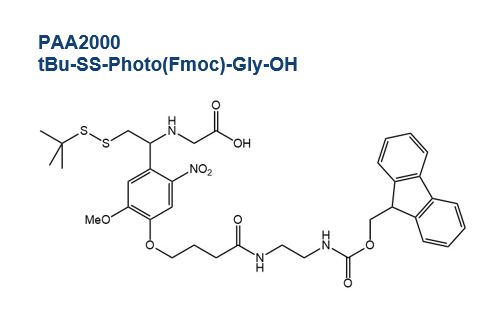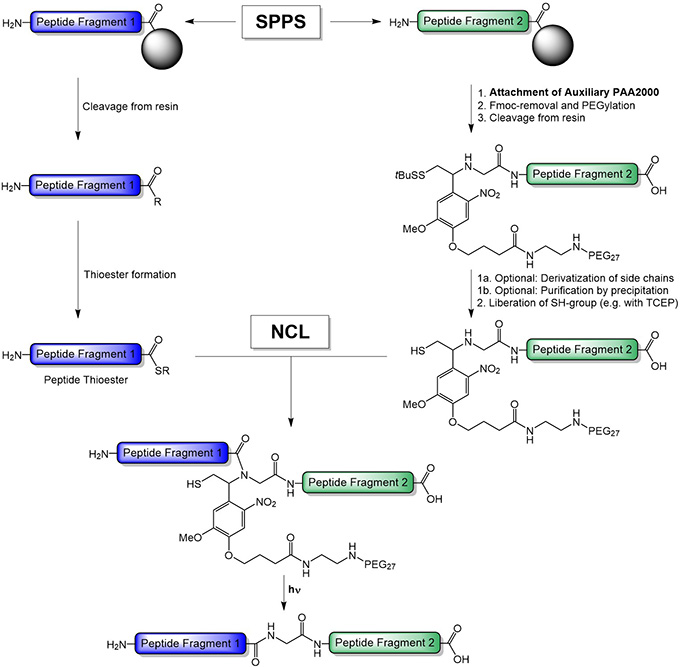Welcome to Iris Biotech
For better service please confirm your country and language we detected.

For better service please confirm your country and language we detected.

Thank you very much for your interest in our products. All prices listed on our website are ex-works, Germany, and may attract customs duties when imported.
You may/will be contacted by the shipping company for additional documentation that may be required by the US Customs for clearance.
We offer you the convenience of buying through a local partner, Peptide Solutions LLC who can import the shipment as well as prepay the customs duties and brokerage on your behalf and provide the convenience of a domestic sale.
Continue to Iris Biotech GmbHSend request to US distributorPublished on 31/08/2016

Native Chemical Ligation is one of the most powerful tools for the preparation of complex peptides and small proteins. However, the classical variant of NCL requires an N-terminal cysteine at the ligation site. Iris Biotech presents an innovative auxiliary reagent for NCL that can be incorporated in place of a glycine residue. Since glycine usually occurs several times in a peptide sequence, this approach significantly increases variability regarding the choice of possible ligation sites. In Native Chemical Ligation, the auxiliary’s SH-group mimics the action of an N-terminal cysteine’s sulfhydryl group.
Following SPPS, the auxiliary is attached to the N-terminus of a peptide sequence in lieu of a glycine residue. The auxiliary’s Fmoc-protected amino functionality can subsequently be deprotected and functionalized, e.g. with a monodisperse PEG. PEGylation is useful for increasing the solubility of peptide fragments, and for facilitating their purification by precipitation with EtOH/Et2O. These properties are especially valuable if the peptide’s amino acid side chains are supposed to be further derivatized post-SPPS, for example by enzymatic glycosylation. Following NCL, the auxiliary can be conveniently removed by irradiation with UV-light.
